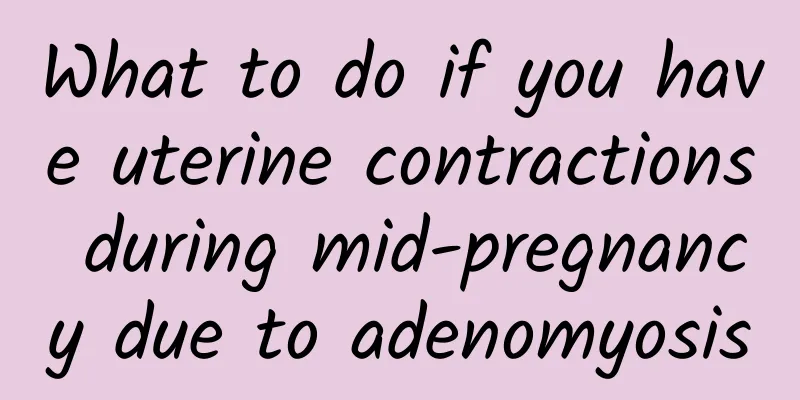What causes adnexitis?

|
The treatment of adnexitis needs to be targeted according to the cause. Common causes include infection, surgical operation, and spread of inflammation to adjacent organs. Treatment methods include antibiotic therapy, physical therapy, and surgical treatment, which should be selected based on the condition. 1. Infection is one of the main causes of adnexitis. Common pathogens include bacteria, viruses, fungi, etc. Sexually transmitted diseases such as gonorrhea and chlamydia are important causes. Antibiotics are required for treatment, such as ceftriaxone, azithromycin, doxycycline, etc., and appropriate drugs should be selected for different pathogens. 2. Surgical operations such as artificial abortion and hysteroscopy may cause adnexitis. The risk of postoperative infection is high, and strict aseptic operation is required. Antibiotics such as metronidazole and clindamycin should be used prophylactically after surgery. At the same time, personal hygiene should be paid attention to and premature sexual life should be avoided. 3. Spread of inflammation of adjacent organs, such as pelvic inflammatory disease and appendicitis, may affect the appendix. Treatment should be targeted at the primary disease. For example, broad-spectrum antibiotics can be used for pelvic inflammatory disease, and appendicitis requires timely surgical resection, while anti-inflammatory drugs such as ibuprofen and acetaminophen can be used to relieve symptoms. 4. Physical therapy such as hot compress and infrared irradiation can promote local blood circulation and relieve pain and inflammation. Hot compress can be done with a hot water bottle or hot towel, 2-3 times a day, 15-20 minutes each time. Infrared irradiation should be performed under the guidance of a professional doctor to avoid burns. 5. Surgical treatment is suitable for severe cases, such as abscess formation, hydrosalpinx, etc. Surgical methods include laparoscopic surgery, laparotomy, etc. The specific choice should be determined according to the condition and the patient's physical condition. After surgery, anti-infection treatment should be continued, and regular follow-up should be performed to prevent recurrence. The prevention and treatment of adnexitis requires comprehensive consideration of the cause and condition, timely medical treatment, and standardized treatment according to the doctor's orders. At the same time, pay attention to personal hygiene, avoid unclean sexual life, have regular physical examinations, and detect and treat early to reduce the occurrence of complications. |
<<: Can you get pregnant again after a miscarriage?
>>: What causes abdominal lymphadenitis in children?
Recommend
Causes of vulvar leukoplakia
Many people don't know much about the disease...
Can I get pregnant with ovarian cysts?
Women with ovarian cystic endometriosis may face ...
What is the difference between malignant and benign hydatidiform mole?
The main difference between malignant and benign ...
How to treat severe cervical erosion? Several methods to treat severe cervical erosion
Cervical erosion is a disease that our female fri...
A brief discussion on the diagnosis of cervicitis
Cervicitis is a common gynecological disease, whi...
Get rid of obesity and constipation quickly in 1 minute a day! Yoga crunches exercise core muscles and double fat burning
"Doctor, I seem to have a stomach full of fe...
What are the symptoms of adnexitis?
Symptoms of adnexitis include lower abdominal pai...
Take a look at the manifestations of atrophic vulvar leukoplakia
Atrophic vulvar leukoplakia is one of the types o...
Do you have the habit of "washing your butt"? Reminder: Regularly cleaning your anus may prevent these 5 diseases
Let me tell you a real case. Mary is a career eli...
Artists love retraining! 6 powerful ways to lose fat and fight osteoporosis
Many artists like weight training, including Jay ...
When is the best time for female medical abortion?
Many women have unexpected pregnancies. If they d...
What are the symptoms of spontaneous abortion? Go to the hospital for treatment in time
In some cases, spontaneous abortion may occur. Th...
Is menopause related to genetics?
Menopause may be hereditary. If menopause is caus...
Will hyperprolactinemia affect ovulation?
Everyone has a certain understanding of prolactin...
What are the methods for testing hyperprolactinemia?
What are the methods for checking hyperprolactine...









